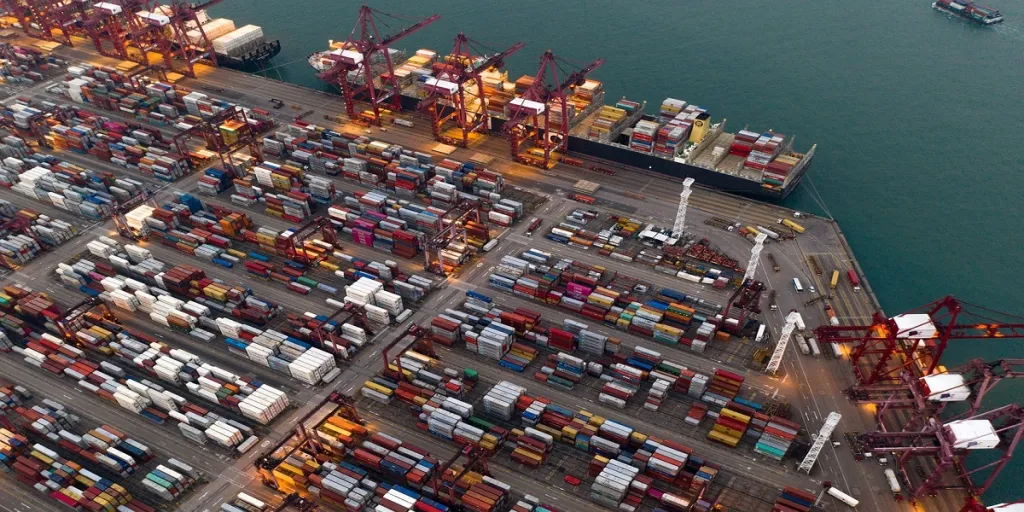The United States is a hub for international trade and many domestic companies rely on imports and exports to conduct business. However, duties assessed on imports are a top-line cost for businesses. In fact, in 2021, the revenues from import duties in the United States totaled $80 billion, which is predicted to increase to $110 billion by 2032. This financial burden makes it more difficult for local businesses to compete in foreign markets.
The paradigm shift in economic development has made it necessary to adopt a new approach to economic policy. Many countries have long been setting up special economic zones (SEZs) as a way to attract foreign investment, encourage domestic activity, and promote economic growth. This article explores the special class of SEZs known as Foreign Trade Zones in the United States. By the end of this blog post, businesses will know what foreign trade zones are, what benefits they provide, and how they differ from free trade zones. So let’s take a sip of coffee and dive right in!
Table of Contents
What is a foreign trade zone?
What are the benefits of a foreign trade zone?
Free trade zone vs foreign trade zone
FTZ for streamlined logistics and improved cash flow
What is a foreign trade zone?
The Foreign-Trade Zones Board (FTZB), under the Foreign-Trade Zones Act of 1934, established foreign trade zones as a means to boost domestic production activity by offering eligible companies tax incentives for the storage, assembly, and processing of imported goods within designated areas of the United States. The U.S. Customs and Border Protection (CBP) oversees these zones, which are located throughout the country with more than 200 approved FTZs operating today.
Goods within a foreign trade zone are considered outside the jurisdiction of the United States for duty-related purposes. But what does this mean for businesses? It means that foreign merchandise in an FTZ can be held, processed, or manufactured without incurring any U.S. customs duties or taxes until they leave the foreign trade zone. This allows manufacturers to reduce or delay the payment of applicable duties and taxes on imported goods.
What are the benefits of a foreign trade zone?
Foreign trade zones can help US-based companies compete with foreign competitors who benefit from cheap labor and low-cost production facilities. The benefits of operating within an FTZ vary depending on whether the company is importing or exporting, what type of operation they have, and what type of authority they’re granted by the FTZ Board or CBP.
Exemption of duties
When operating within an FTZ, businesses can avoid paying duties and quota charges on re-exported items. This means they can import goods, manipulate them, and then re-export them without having to pay US customs. Manufacturers are also entitled to duty-free incentives if they produce large amounts of waste materials. An FTZ allows companies to destroy or consume their goods for internal use without paying associated taxes and duties. This can help businesses reduce overhead costs and boost their bottom line.
Deferment of duties
Applicable duties are only due when products leave a foreign trade zone and enter the US customs territory. In other words, businesses can delay duty payment obligations on imported goods until they are withdrawn for commerce in the U.S. market. Importers can use deferred duties to help their businesses manage cash flow pressure and reduce their overheads.
Businesses can also ship goods from one FTZ to another without paying duty charges. This is called a “zone-to-zone transfer” or “cross-docking”, and is especially helpful for companies that have multiple facilities, or have downstream customers also located in an FTZ.
Reduction of tariffs
Foreign trade zones can help companies reduce their duty costs by utilizing the “tariff inversion” mechanism. This is a phenomenon that occurs when the final product from manufacturing activities in an FTZ has a lower US Harmonized Tariff rate than its input parts or components when entered into the zone. The result is that companies are incentivized to import components from overseas and assemble them into a finished good in the U.S. territory.

Let’s take an example of an auto manufacturer that imports tires and steel plates to assemble cars. Now, suppose that the U.S. Harmonized (HTS) tariffs of steel plates and tires were respectively 2.5% and 3.5%, while the finished cars had only a 2.0% tariff. Instead of paying an average duty rate of 3.0% [(2.5%+3.5%)/2], the auto manufacturer would import these components without having to pay duties and assemble cars in the foreign trade zone.
The finished cars would only be subject to the 2.0% tariff on their entry into the US customs territory. This would save the company about 1% per unit. That may seem like a small number, but when we’re talking about hundreds of millions in revenue each year, it becomes something much more significant—a huge financial benefit in the automotive industry!
While FTZs can be quite beneficial, it would be a mistake to think they can help businesses dodge punitive tariffs. For example, manufacturers that use FTZs to import goods from China would still be subject to Section 301 tariffs (China Tariffs) if they did not subsequently re-export those goods to other foreign countries.
Quota avoidance
Manufacturers can use foreign trade zones to stockpile foreign inputs and goods that exceed their import quota, potentially allowing them to take advantage of lower prices and have access to new materials as soon as a new quota is re-established. Moreover, certain goods subject to quota limits may still be manipulated while they are in the foreign trade zone to produce new, different items that are not subject to quota.
Free trade zone vs foreign trade zone
Free trade zones, as established in many other countries than the U.S., and foreign trade zones are two different classes of special economic zones, which provide duty reduction or exemption to companies operating within the designated area. A free trade zone is usually a designated geographical area within a country’s borders, and companies typically have to physically move their operations into the zone to take advantage of special tax and regulatory exemptions.
Foreign trade zones, on the other hand, are legal statuses granted by the U.S. FTZ Board. And while most FTZs are located in or near CBP ports of entry, physical relocation is not always required for a company to obtain an FTZ status. The company can simply select an existing facility or part of its site to apply for foreign trade zone status.
FTZ for streamlined logistics and improved cash flow
By utilizing a foreign trade zone (FTZ), US-based businesses and manufacturers can keep their costs low, operate more effectively and efficiently, and streamline their formal customs entry procedures. Companies can apply for foreign trade zone status by visiting the official website of the International Trade Administration, but they should first learn how U.S. Customs assesses duties and taxes on imports.

Looking for a logistics solution with competitive pricing, full visibility, and readily accessible customer support? Check out the Alibaba.com Logistics Marketplace today.




